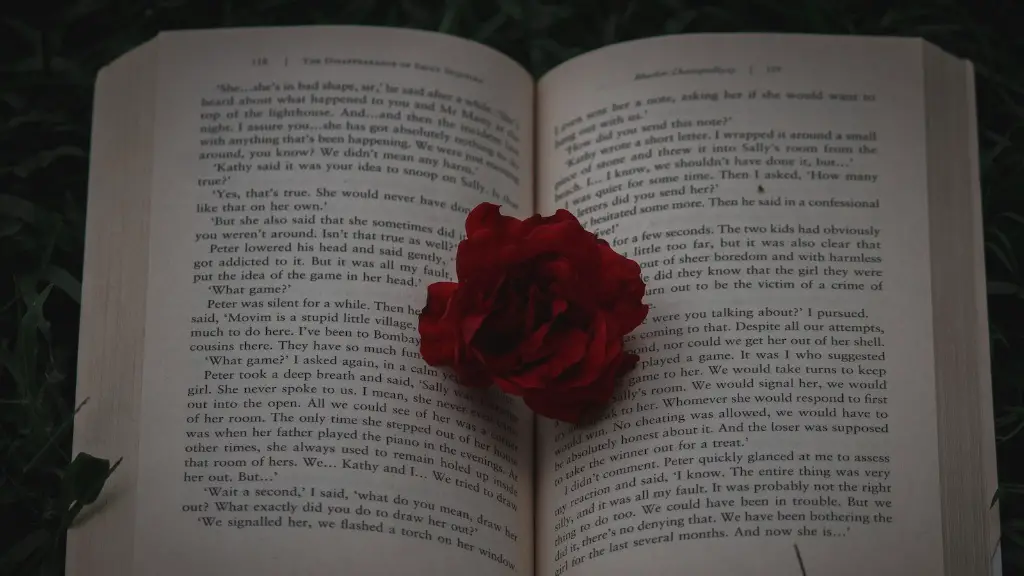Personification is a literary device frequently used in poetry and other forms of literature. It is when an object, idea, or living thing is given human-like characteristics and attributes. Personification is often used to add a special layer of meaning to a poem by making objects, creatures or ideas more relatable to the reader or poet. To personify something, one has to create a comparison between a human being and the object, creature or idea which is being used. This is done by giving the object, creature or idea human attributes or characteristics such as being able to speak or feel emotions. Personification is a powerful tool for poets and can be seen as a way to bring life to the words.
One of the key benefits of using personification in poetry is that it can allow a poet to create vivid and engaging imagery. This can in turn help to emotionally involve the reader and engage their imagination. Personifying things can also be used to create a sense of empathy in the reader, as it can give abstract ideas and objects human-like characteristics. For example, a poet may personify a storm, giving it human characteristics such as feelings and emotions. This can help the reader feel connected to the object and may evoke different feelings, depending on the poem.
Personification can also be used to bring out certain themes in the poem, such as emotions or the artist’s personal struggle. It can also be used to represent ideas or concepts in an abstract way. For example, a poet may personify a river and give it human-like characteristics to explore the ideas of change and transformation. They can then use this personified river to explore the idea of life’s journey and the changes one might experience as life progresses.
Personification can also be used to better express what a poet is feeling or thinking. By giving human characteristics and attributes to things, the poet can express their emotions in an indirect way, without having to actually say what is being felt. This may help the reader connect with the poem on a deeper level and gain a better understanding of the poet’s perspective.
The Benefits of Personification in Poetry
Personification can be a very useful tool for poets. It can add a unique layer of meaning to the poem and can help with the poet’s interpretation of abstract ideas. It can also help to engage the reader’s imagination and empathy by allowing them to connect to the poem in a more meaningful way. Personification can also be used to convey emotions or ideas the poet may have, without having to say them outright.
Personification and Other Literary Devices
Personification can often be used in conjunction with other literary devices to create a more complex poem. For example, a poet may use personification to create a vivid image of an object or creature, then use metaphors or similes to further explore the idea or emotion being conveyed. By using personification along with other literary devices, the poet can create a richer and more vivid poem.
Understanding Personification in Poetry
Personification is an important literary device that can be used to convey ideas and emotions in an indirect way. To understand how personification is used in poetry, one must first understand what it is. Personification is when objects, creatures and ideas are given human-like characteristics and attributes. This can include being able to talk, think, or feel. It is a powerful tool that poets use to bring life to the words and to evoke emotion in the reader.
Examples of Personification in Poetry
Personification can be used in many different kinds of poetry. Here are some examples of personification used in various kinds of poems. In an epic poem about Zeus, the poet may personify Zeus as a powerful and wise ruler. In a love poem, the poet may personify their beloved as the sun and the stars. In a political poem, the poet may personify an oppressive government as an evil monster. All of these examples show how personification can be used to bring life to the words and to convey different ideas and emotions.
The Power of Personification
Personification is a powerful tool for poets to use. It can help to engage the reader’s imagination and to evoke emotion. It can also be used to more effectively convey the poet’s ideas and emotions without having to directly say what they are feeling. When used correctly, personification can add a unique layer of meaning to a poem and can help the poet express their thoughts and feelings in an indirect way.
Personification: How It Can Make a Poem Come to Life
Personification is a tool that can help make a poem come to life. By using personification, the poet can convey emotions and ideas in an indirect way and can also engage the reader’s imagination. Personification can also be used in conjunction with other literary devices to create a richer and more vivid poem. Understanding how to use personification can be a powerful tool for poets and can help to bring life to their words.
The Use of Personification in Various Types of Poetry
Personification can be used in a variety of different types of poetry. From epic poems to love poems and political poems, personification can help to bring life to the words and can help the reader to better understand the poet’s perspective. Understanding the power of personification and how it can be used to create a vivid and engaging poem can be an incredibly useful tool for poets.
Exploring Personification in Poetry
Exploring personification in poetry can be a great way to gain a better understanding of the poet’s perspective and the ideas or emotions being conveyed. It can also help to engage the reader’s imagination and to make them think more deeply about the poem. Understanding how to use personification is an important tool for poets and can help to make their poems come alive.



